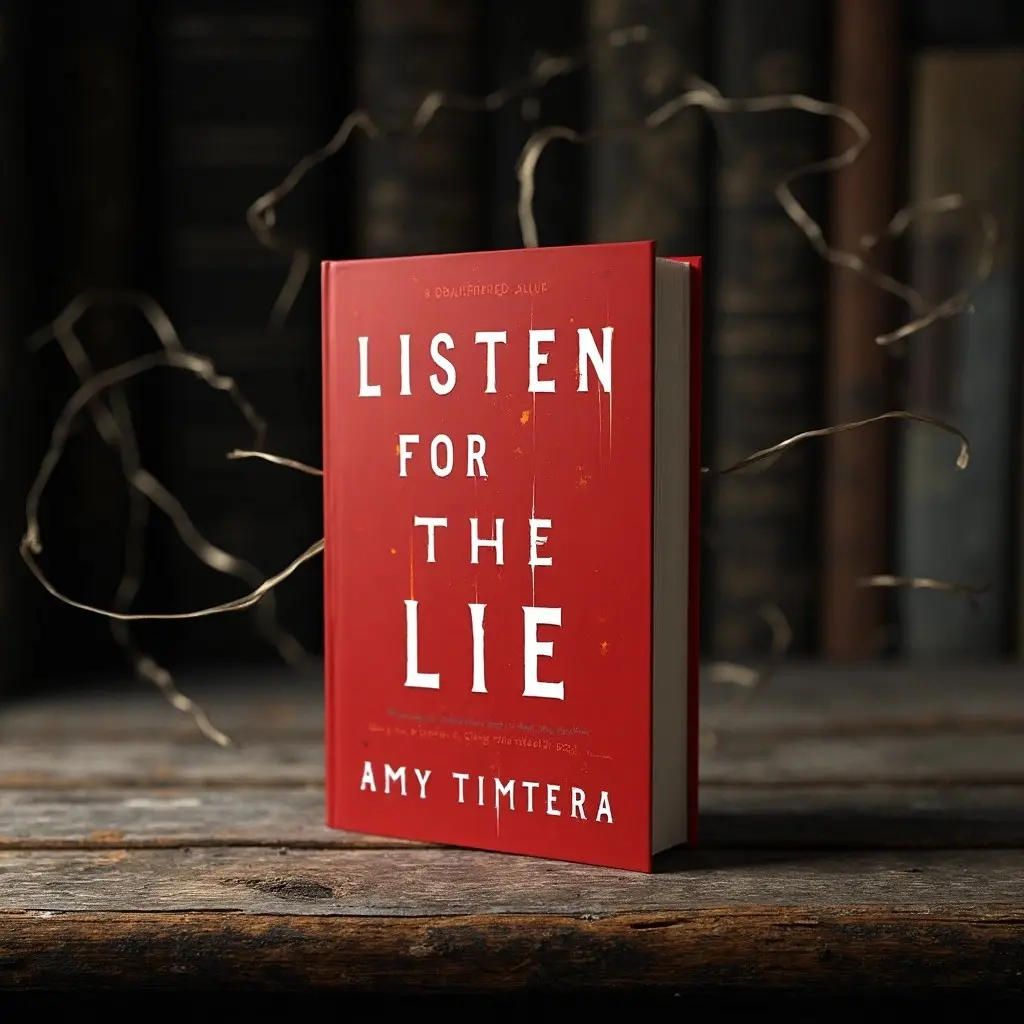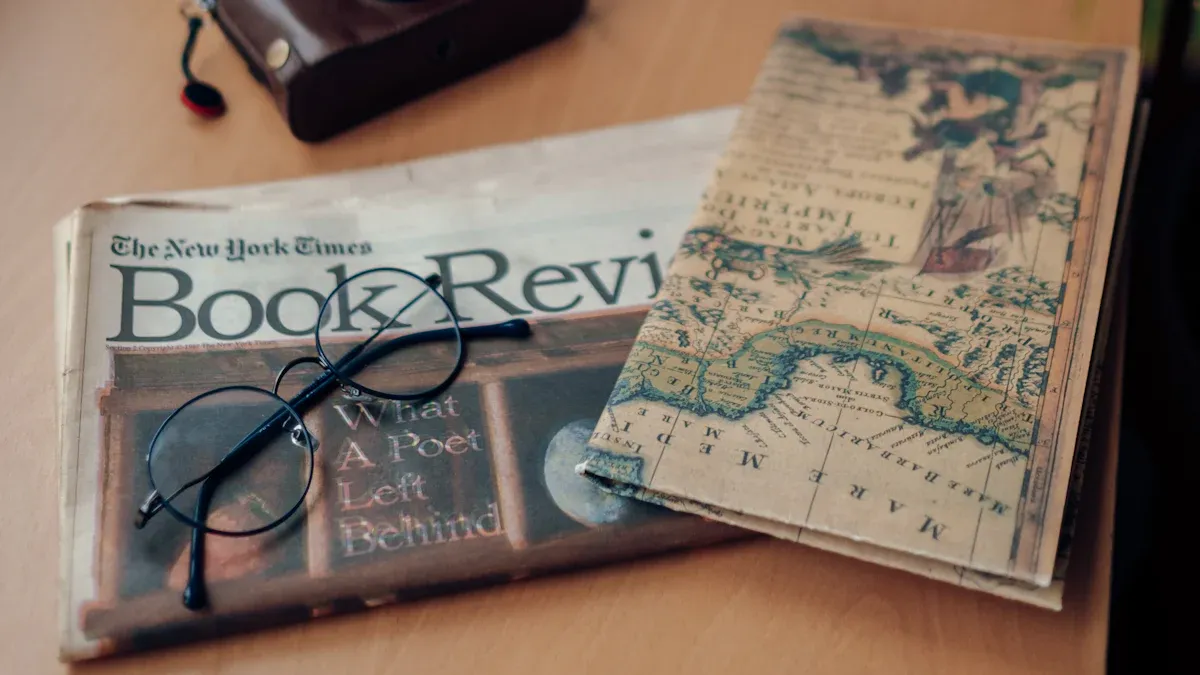I finished You Are Here by David Nicholls in one sitting. This book made me laugh out loud and feel a little hopeful. The story follows two lonely people on a coast-to-coast walk, searching for love and second chances. With hundreds of glowing reviews, it’s a clear bestseller.
Key Takeaways
You Are Here tells a warm and hopeful story. It is about two lonely people who find a connection. They go on a walk from one coast to the other. The book mixes humor and heart. It feels real and makes you feel good.
The characters, like Marnie and Michael, are easy to relate to. They have many sides to their personalities. The story shows that second chances are hard but possible. Personal growth is tough but brings hope too.
This book is good for people who like romantic comedies. It is also for those who enjoy stories about second chances. Readers who like journeys with both deep feelings and fun moments will enjoy it.
Worth Reading?
First Impressions
I have to admit, I started You Are Here by David Nicholls late at night, thinking I’d read just a few chapters. I ended up finishing the whole thing before sunrise. The book’s tone grabbed me right away. It felt light-hearted and hopeful, but not in a cheesy way.
The humor made me smile, and sometimes I even laughed out loud. The characters felt real from the start. Their awkwardness and small talk made me root for them.
The story’s tone stays consistent. It keeps things cheerful and a bit nostalgic, which fits the romantic comedy vibe.
The way the author introduces Marnie and Michael sets the mood. I could sense their loneliness, but also their hope for something better.
The writing style uses simple words and clever dialogue. This makes the emotional moments hit harder and the funny parts even funnier.
I noticed the cover art, too. The soft colors and playful design told me right away this book would be warm and inviting. I always look for books that make me feel good, and this one delivered.
Tip: If you love books that balance humor with heart, you’ll probably connect with this story right away.
Who Will Enjoy It
I think You Are Here by David Nicholls speaks to a pretty specific group of readers. If you’re someone who enjoys stories about second chances, awkward romance, and finding connection in unexpected places, this book will feel like a treat.
Readers in their 30s, 40s, or 50s might see themselves in Marnie or Michael. The book explores what it’s like to start over when you thought your story was already written.
If you like romantic comedies, witty banter, or books that make you laugh and sigh at the same time, this one’s for you.
People who enjoy walking, hiking, or travel stories will appreciate the coast-to-coast journey. The setting adds a fresh twist to the romance.
Fans of David Nicholls’ earlier books, like One Day, will notice his signature mix of humor and heartache.
I also think this book fills a gap for readers who want something uplifting but not shallow. It’s not just about falling in love. It’s about feeling seen, even when life feels lonely.
If you’re looking for a book that feels like a friend, this is a good pick.
The story doesn’t try to be something it’s not. It knows its audience and delivers exactly what they want: warmth, wit, and a little hope.
You Are Here by David Nicholls: Overview

Plot Summary
I got pulled into the story right away. You Are Here by David Nicholls follows Marnie and Michael, two people who feel stuck in their own lives. Both have lost their way a bit, and both need a fresh start. Their paths cross when a mutual friend invites them on a coast-to-coast walk across England.
At first, they seem like total opposites—Marnie is a bookish mapmaker, Michael is a recently divorced teacher. But as they walk, their awkward conversations turn into real connection.
Each chapter shows how Marnie and Michael change, step by step. I noticed how their motivations and fears come out in small moments—like sharing snacks or getting lost in the rain.
The story mixes in subplots about family, regret, and hope. These little side stories add depth and keep things interesting.
The plot doesn’t rush. It lets the characters grow and face their own issues before anything romantic happens.
I love how the story arc feels natural. The characters don’t just fall in love—they earn it, one mile at a time.
Setting and Journey
The coast-to-coast walk isn’t just a backdrop. It shapes every part of the story. I could almost smell the wet grass and feel the wind on my face. The book describes the changing scenery—rocky hills, muddy paths, quiet villages—so well that I felt like I was right there with them.
The journey moves east to west, with clear maps and distances. I never felt lost, even when the characters did.
The weather changes a lot. Sometimes it’s sunny, sometimes it’s pouring. These shifts match the characters’ moods.
The walk gives Marnie and Michael space to talk, argue, and reflect. Every new place brings a new challenge or surprise.
I have to give props to the way the setting ties into the story. The walk isn’t just physical—it’s emotional, too. Each step brings them closer to understanding themselves and each other.
Characters

Marnie
Marnie grabbed my attention right away. She isn’t your typical romantic lead. I found her fascinating because she’s so layered and real.
She struggles with cleptomania and has a strong fear of the color red.
Her dreams, full of red flashes and shadows, made me feel her anxiety.
I noticed how her nightmares often connect to her mother, hinting at old wounds she can’t shake.
The author uses these dream scenes to show what Marnie hides from everyone else.
I felt for her. She’s not just quirky—she’s fighting battles inside her own mind.
Marnie’s story made me think about how everyone carries invisible scars. She’s not perfect, but that’s what makes her so easy to root for.
Michael
Michael surprised me. He’s not flashy or bold, but he’s got depth.
He reminded me of people I know—quiet, a little awkward, but kind.
Michael grew up feeling alone, which shapes how he acts now.
He sometimes messes up, mixes work with feelings, and can be selfish.
He cares deeply about others, even if he doesn’t always show it the right way.
I liked how he tries to do the right thing, even when he’s scared or unsure.
Michael’s flaws made him feel real. I found myself cheering for him, hoping he’d find happiness.
Supporting Cast
The side characters add flavor to the story.
Some bring comic relief, others push Marnie and Michael to open up.
I liked how each person on the walk had their own quirks and stories.
They never steal the spotlight, but they make the journey feel fuller and more believable.
The supporting cast reminded me that every journey is better with a few oddballs along the way.
Themes
Loneliness and Connection
I felt the ache of loneliness in this book. Marnie and Michael both walk through life feeling out of place, even when surrounded by people. Their journey reminded me of stories I’ve read about nuns in convents—places built for quiet and reflection, but sometimes those walls just make you feel more alone.
Loneliness isn’t just about being by yourself. It’s about missing real, meaningful connections.
Sometimes, even when you’re with others, you can feel like you’re not truly seen or understood.
The book shows how people try to fight loneliness with small comforts, like holding onto a favorite object or memory.
I noticed that just being around people doesn’t fix loneliness. You need real, honest relationships.
I loved how the story didn’t treat loneliness as something shameful. Instead, it showed how reaching out, even awkwardly, can change everything.
Second Chances
Second chances pop up everywhere in this story. Both main characters get a shot at starting over, even though they’re scared.
Marnie and Michael both carry regrets. They think their best days are behind them.
The walk gives them space to try again, to open up, and to trust someone new.
I found myself rooting for them, hoping they’d take the risk and let themselves be happy.
Sometimes, the hardest thing is believing you deserve another chance.
The Walking Journey
The walk itself is more than just a way to pass time. It’s a test, a challenge, and a chance to see the world differently.
Each day, the group covers new ground, tracking distance and time, sometimes pushing past what feels comfortable.
I noticed how the changing scenery and weather matched the ups and downs of their emotions.
The journey isn’t just about reaching the end. It’s about the little moments—sharing snacks, getting lost, laughing in the rain.
Walking side by side, Marnie and Michael learn about each other and themselves. The miles matter, but the real journey happens inside.
Style
Humor and Dialogue
I laughed out loud more than once reading this book. The humor feels natural, never forced. The conversations between Marnie and Michael remind me of those moments when you say something awkward, then both people just start laughing. The dialogue sparkles with quick wit and gentle teasing.
I noticed how the author uses short, punchy lines to keep things moving. It’s not just about jokes—sometimes the funniest parts come from the characters’ honest reactions to weird situations.
The style reminds me of books that teach you how to be funny in real life. For example, Patrick King’s guide on quick-witted conversation gets about 3.6 stars from readers who love its simple, practical tips for adding humor to everyday talk.
I also thought about classic scenes like Agatha Runcible showing up in Hawaiian dress at breakfast in Evelyn Waugh’s “Vile Bodies.” That kind of unexpected, perfectly timed comedy pops up here too.
The best part? The humor never feels mean. It’s warm, a little self-deprecating, and always rooted in the characters’ personalities.
Narrative Structure
The story moves at a steady pace. I never felt lost or bored. The chapters break up the journey into manageable pieces, almost like checkpoints on a map. I could see the classic three-act structure at work:
The setup introduces Marnie and Michael and their reasons for joining the walk.
The middle builds tension as they face challenges and start to open up.
The final act brings everything together, resolving their personal struggles.
The structure keeps things clear and easy to follow.
Each character’s growth matches the story’s progression, so I always felt invested.
I’ll be honest, the pacing made it easy to keep turning pages, even when I promised myself I’d go to bed early.
Comparison to Previous Works
Similarities
When I think about David Nicholls’ earlier books, I spot a few things that always show up.
He loves writing about people who feel a little lost or out of place.
His stories often mix humor with real, sometimes painful, emotions.
The main characters usually get a second chance at happiness, even if they mess up along the way.
I always notice his sharp, witty dialogue. It feels like you’re eavesdropping on real conversations.
If you’ve read his other novels, you’ll recognize these patterns. Readers often compare books by the same author to see how their style and themes grow over time. I do this too. It’s fun to spot the familiar bits, like old friends popping up in a new place.
Differences
This book stands out in a few ways. I noticed the journey itself feels more important here. The coast-to-coast walk shapes every scene. The setting isn’t just a backdrop—it’s part of the story.
The emotional tone leans more hopeful and gentle than some of his earlier, bittersweet stories.
The pacing feels slower, letting the characters breathe and change at their own speed.
I spotted fewer clichés and overused tropes. The story feels fresh, not just a repeat of his past hits.
Here’s a quick look at how reviews use different words for books with different themes:
Theme Comparison | Words Used More Often | Words Used Less Often | Notes |
|---|---|---|---|
Family vs History | “recognizable”, “touching” | “impressive”, “gripping” | Emotional tone shifts |
I like that each book stands on its own. Even with familiar themes, Nicholls finds new ways to surprise me.
Strengths & Weaknesses
Highlights
I have to give props to the way this book made me feel seen. The dialogue sparkled with wit, and the characters felt like people I might meet on a real walk. Here’s what stood out for me:
The humor felt natural. I found myself grinning at the banter between Marnie and Michael.
The tone stayed uplifting, even when the story touched on loneliness or regret.
Characters felt relatable. Their awkwardness and small victories made me root for them.
The journey itself added a fresh twist to the romance. Every new setting brought a new mood.
Reviews from other readers echo my thoughts. They call the book “well-organized,” “clear,” and “comprehensive.” Many say it’s perfect for anyone who wants a story that balances heart and humor.
“A good review sums up the book’s strengths and weaknesses, and tells you who will love it. This one gets recommended for fans of witty, heartwarming fiction.”
Drawbacks
To be fair, not everything worked perfectly for me. Some parts dragged, and I saw a few plot turns coming from a mile away. Here’s a quick look at the main drawbacks:
Primary Drawback | Description | Possible Fixes or Mitigations |
|---|---|---|
Pacing Issues | Some chapters felt slow, especially in the middle of the walk. | Shorter chapters or more action could help. |
Predictability | I guessed a few big moments before they happened. | More surprises or twists would keep things fresh. |
Character Voice | At times, Marnie and Michael sounded a bit too similar in their thoughts. | Sharper differences in their inner dialogue would add depth. |
I’ll be honest, none of these ruined the experience for me. The warmth and humor made up for the slow spots. Still, if you want a pulse-pounding plot, this book might feel a bit gentle.
This book made me smile and think about getting another chance. I would tell anyone who likes stories about people, with jokes and feelings, to read it. Most people who read it agree with me. They give it good scores and say they would tell friends to read it too.
I would rate it a Dionysus Review Rating: 7 out of 10.
Sip The Unknown—Discover Stories You Never Knew You’d Love!
Dionysus Reviews Has A Book For Every Mood
Biography & Memoir
Fiction
Mystery & Detective
Nonfiction
Philosophy
Psychology
Romance
Science Fiction & Fantasy
Teens & Young Adult
Thriller & Suspense
Frequently Asked Questions
Is “You Are Here” a good pick for book clubs?
I think so! The story sparks real conversations about second chances and finding connection.
The characters feel relatable, so everyone can share their own take.
Do I need to love hiking to enjoy this book?
Not at all. I barely walk to my mailbox, but I still loved the journey.
The walk is more about personal growth than actual hiking.
How does this book compare to “One Day”?
Both books mix humor and heartache.
“You Are Here” feels lighter and more hopeful.
I found the characters here a bit more awkward, in a good way.








